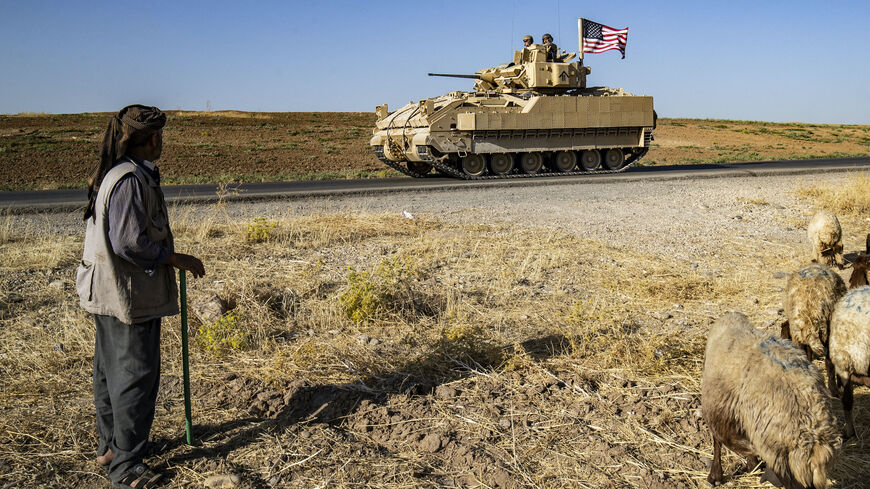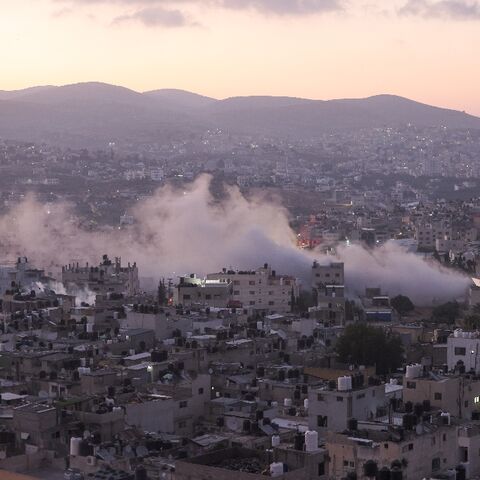Washington’s top general on Tuesday threw cold water on questions about the need for additional military deployments to the Middle East to fend off a series of tense encounters with US aircraft initiated by Russian pilots over Syria.
“There’s been an uptick, but I wouldn’t overstate it too much,” Chairman of the Joint Chiefs Gen. Mark Milley said during a press briefing alongside Defense Secretary Lloyd Austin at the Pentagon. “We’ve got adequate capabilities to defend ourselves.”
Why it matters: The Pentagon is aiming to maintain an edge over the Kremlin’s pilots in Syria without dragging them into an escalation cycle by amassing more forces just yet.
Milley’s comments came one day after Washington announced plans to send high-end F-35 Joint Strike Fighters to the Middle East on the heels of a short-term rotation of super-advanced stealth F-22 Raptors to Jordan. Both deployments were intended to dissuade Russian pilots from harassing US forces.
A senior US military official speaking on condition of anonymity last week said the F-22s’ stealth avionics enabled American pilots to catch their Russian counterparts off-guard. “They stopped being quite as provocative,” the official said Friday.
Milley on Tuesday suggested that additional deployments to the region would not stop Russian pilots from flying freely over Syria’s airspace, however.
Russian combat pilots have regularly flown their weapons-laden aircraft low over US bases in Syria in over the past year, sometimes as frequently as once per day. American commanders have described the stunts as deliberate provocations in violation of existing airspace agreements between the two armies.
Milley on Tuesday said the reasons behind the aggressive maneuvers remained unclear. “I don’t know whether it’s connected to Ukraine or not. Right now there’s nothing to suggest that it is,” the general said.
Earlier this month, Russian Su-35 and Su-34 aircraft flew in close and dropped flares around three US MQ-9 drones over northwest Syria as they were surveilling a suspected senior Islamic State emir ahead of a planned strike, which was later carried out.
Prior to Milley's press briefing on Tuesday, the top US Air Force commander in the Middle East said Russian Su-35 pilots upped the ante by crossing the flight path of a manned US MC-12 surveillance aircraft over Syria, forcing its crew to fly through the Su-35’s wake turbulence.
The maneuver marked a “new level of unsafe and unprofessional actions by Russian aircraft operating in Syria” and “put the four crew members’ lives at risk,” US Air Force Lt. Gen. Alex Grynkewich said in a statement.
Between the lines: Milley included a subtle warning in his projection of confidence on Tuesday, emphasizing that American forces are authorized to defend themselves if they detect “hostile intent.”
“Our pilots are extraordinarily well trained,” Milley said. “We have rules of engagement. If at any point in time any of our troops sense that there’s hostile act or hostile intent, they will protect themselves,” he said.
“If it’s unsafe or unprofessional acts, that’s a different issue. We try to work that out through the deconfliction channel that’s down at the tactical level so that we don’t have an inadvertent air-to-air accident or incident,” the general added.
Roughly 900 American troops remain in Syria as part of the US-led mission to defeat the Islamic State. Last week, a senior US military official said Iranian IRGC Quds Force and Russian military commanders have been sharing intelligence and coordinating plans to pressure the US contingent to withdraw from the country.
Know more: Tehran's top general, Maj. Gen. Mohammad Bagheri, claimed today Iran's military has built up sufficient deterrence to prevent a US and Israeli strike on the country.
After years of backroom deliberations, the US and Israel in January began war-gaming long-range strategic airstrikes similar to those that would be required to knock out Iran's underground nuclear facilities.
Last week, the Pentagon dispatched a US Navy guided-missile destroyer and F-16s to patrol waterways near the Strait of Hormuz in response to a spate of seizures of commercial tankers by Iran.








